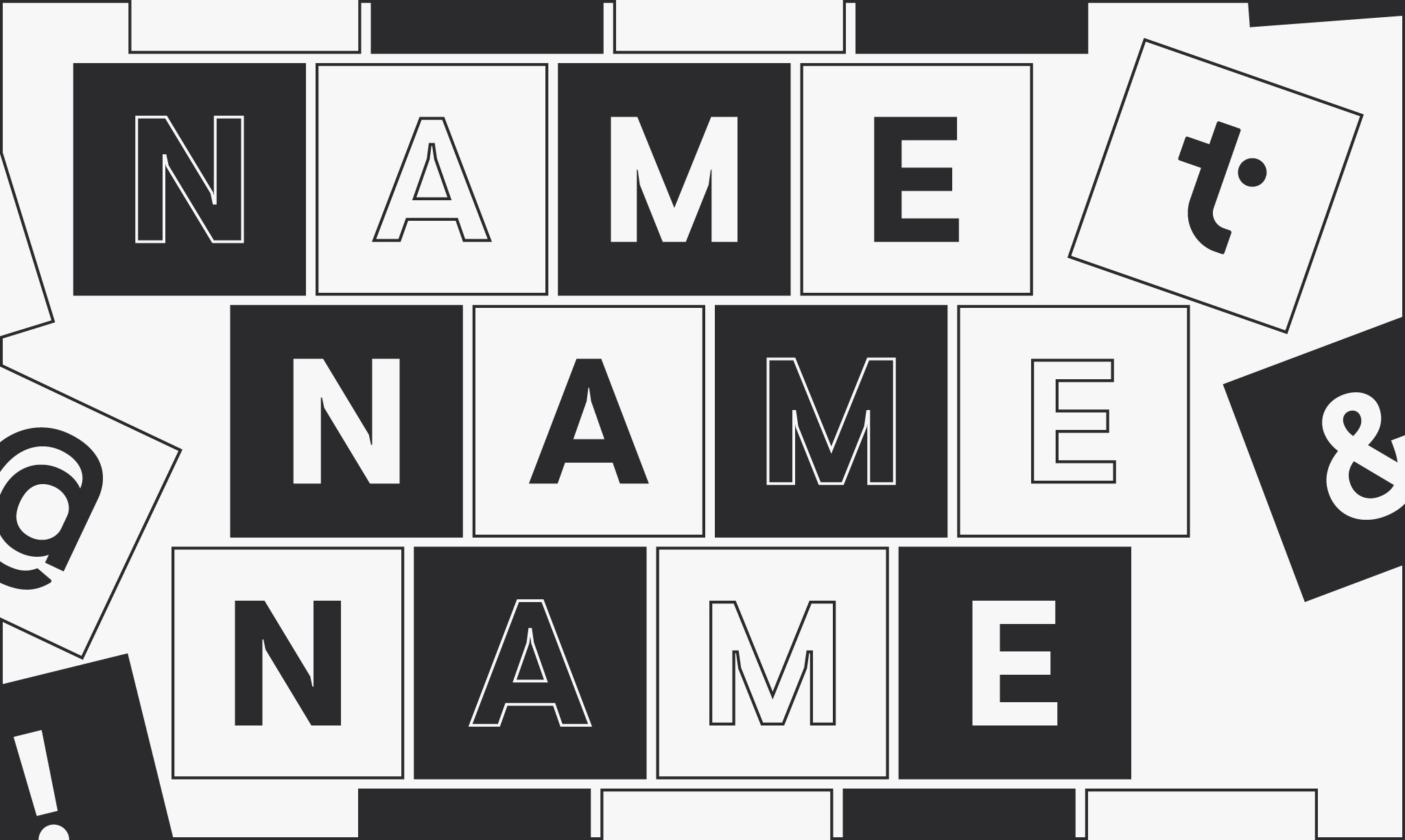THE POWER (AND PITFALLS) OF NAMING
Landing that perfect name.
And why it matters for your brand.
Landing that perfect name.
And why it matters for your brand.

Names are destiny. It’s an age-old adage — for good reason. And while most of us don’t get to choose our names, fortunately, brands do. Everything your brand is and can become should be encapsulated in these one or two transformational words. Your name is your brand distilled to its most compelling essence.
But what makes a great name? A lot of things, actually, some readily qualifiable, others a bit less so. But they all share some common ground. A best-in-class name should build on your brand DNA, reflecting your characteristics and nodding to your customer promise. It should help differentiate you in the competitive landscape and generally be kept as short as possible.
A great name should have stopping power and memorability, spurring consideration and staying with people well after they encounter it. It should engage and inspire your audience/s, understanding their motivations and starting to create an emotional connection with them. It should reflect where you are now and where you want to go, allowing for growth beyond current product offerings and customer bases. It should also sound good when spoken and look good when written out or rendered as a logo.
Finally, a great name should start to tell a story. Whether it’s one of everyday utility or game-changing possibility, the best names pull us in with the promise of something more. Something that piques our interest, satisfies a fundamental need or simply makes us feel, more than we may even fully understand. Few names check all these boxes, but the most successful aim to cover as many as possible.
Getting to that great name is equal parts story-craft and science — at least, the strategy and research side of science. At Tether, our process starts with the soul of your brand and ends with a name rigorously conceived and vetted to capture the heart of your audience. With a lot of steps in between. We begin by immersing ourselves in your brand: who you are, what you do, why you do it and what sets you apart.
We work together to understand your goals. We survey the competition, looking for white space and points of differentiation. Next, we assemble a cross-functional team and brainstorm names — A LOT of names — spanning different territories (more on that to come). Then we review and ruthlessly edit our long list, identifying top contenders, making refinements and adding more options to the mix. And finally, we check for potential conflicts via Google, URL and USPTO (US Patent and Trademark Office) searches.
So what about those naming territories? All our naming exercises start by going wide, exploring a broad swath of options, from close in to completely unexpected. To guide us in the process, we concentrate on three distinct and ultimately differentiating territories. The first is Descriptive, names that communicate what the brand is/does in a simple, direct manner, like Netflix, Vitamin Water and Whole Foods. Next, Suggestive options evoke relevant associations but don’t describe the brand — think Apple, Tesla or Facebook. And finally, Coined names are invented words, which often borrow elements of relevant existing words and act as an empty vessel to be imbued with meaning, such as Xerox, Kodak and Lululemon.
How do you know when you’ve landed on that perfect name? Ultimately, only time and your audiences’ response will tell, but using the criteria above will never steer you wrong — plus it’ll help take much of the potentially derailing subjectivity out of making a choice. And if you’re thinking about consumer testing, do so thoughtfully. Simply asking people which names they like most is a recipe for vanilla, as people are naturally averse to the unexpected. No test group, for example, would push Tesla or Lululemon to the top of the list.
Instead, survey a well-screened audience, asking them to share what associations they have with your options, how they line up with your brand attributes and what kind of positive sentiments they evoke. With these insights in hand, you’ll have the data you need to pick a name — and send your newly christened brand out into the world with confidence and promise.
Here are some examples of brand and product names Tether has created:
Tatcha
A memorable coined name for a skincare brand devoted to sharing the ancient beauty secrets of Japan.
Popwell
A healthier take on soda from Sparkling Ice: flavored carbonated water boosted with prebiotics, vitamins and antioxidants.
Persona
Customized supplements formulated to meet a person’s unique wellness needs.
Vima / Rev
Performance-enhancing strobe training glasses (Rev) from a brand (Vima) committed to reimagining the limits of performance.
Vella
A new kind of serial storytelling designed to connect people with their favorite content, the authors and like-minded readers.
Luvo
Better-tasting, better-for-you frozen meals cooked up to elevate health, sustainability and deliciousness.
Ably Apparel / Filium
Breakthrough technology (Filium) that makes natural fabrics virtually stain- and odor-proof by a brand (Ably Apparel) ready to revolutionize the industry.
Mello
Chocolate infused with relaxing botanicals from the treat makers behind Awake Caffeinated Chocolate.
SH/FT
Boundary-breaking, style-forward footwear from Columbia designed to take people and the brand into all-new territory.
Nexii
A first-of-its-kind construction enterprise dedicated not only to bettering the category but the world we live in.
Opus One Curia
A private, members-only club for select customers of this venerated California winery.
Consumer Brands Association
A reimagined identity for the consumer packaged goods trade organization formerly known as the Grocery Manufacturers Association.
Need a name for your brand or product? We’d love to help. Contact us at newbusiness@tether.com.